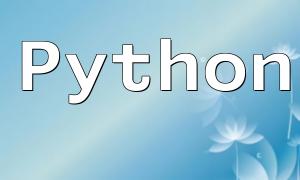Introduction:
PHP is a widely used server-side scripting language that provides powerful features and flexibility for developing dynamic websites. However, behind its ease of use and flexibility lie some security challenges. This article delves into several common PHP security vulnerabilities and offers code examples to help developers implement effective protective measures.
SQL injection is one of the most common security vulnerabilities, where attackers inject malicious SQL statements to perform unauthorized operations on the database. To prevent SQL injection, it is recommended to use prepared statements and parameter binding. Below is a sample code:
<?php
// Retrieve username and password from user input
$username = $_POST['username'];
$password = $_POST['password'];
// Connect to the database
$db = new PDO('mysql:host=localhost;dbname=mydb', 'username', 'password');
// Use prepared statements and parameter binding to execute the SQL query
$stmt = $db->prepare('SELECT * FROM users WHERE username = :username AND password = :password');
$stmt->bindValue(':username', $username);
$stmt->bindValue(':password', $password);
$stmt->execute();
// Fetch the query result
$user = $stmt->fetch();
// If result is empty, username or password is incorrect
if (!$user) {
echo "Invalid username or password.";
} else {
echo "Welcome, " . $user['username'] . "!";
}
?>
XSS (Cross-Site Scripting) is another common security vulnerability where attackers inject malicious scripts to steal sensitive user information. An effective way to prevent XSS attacks is to escape HTML special characters from user input. Below is a sample code:
<?php
// Retrieve comment content from user input
$comment = $_POST['comment'];
// Escape HTML special characters in the comment
$escapedComment = htmlspecialchars($comment);
// Save the comment to the database
$db->query("INSERT INTO comments (content) VALUES ('$escapedComment')");
?>
File upload vulnerabilities allow attackers to upload malicious files and execute arbitrary code on the server. To prevent such vulnerabilities, it's essential to restrict the file type and size. The following example demonstrates how to limit the file type and size during upload:
<?php
// Retrieve file details from the uploaded file
$fileName = $_FILES['file']['name'];
$fileSize = $_FILES['file']['size'];
$fileTmp = $_FILES['file']['tmp_name'];
$fileError = $_FILES['file']['error'];
// Check file type and size
$fileExt = pathinfo($fileName, PATHINFO_EXTENSION);
$allowedTypes = array('jpg', 'jpeg', 'png');
$maxSize = 1000000; // 1MB
if (!in_array($fileExt, $allowedTypes) || $fileSize > $maxSize) {
echo "Invalid file type or size.";
} else {
// Move the file to the designated directory
move_uploaded_file($fileTmp, 'uploads/' . $fileName);
echo "File uploaded successfully.";
}
?>
Security in PHP is crucial for developers. With proper error handling and protective measures, we can significantly reduce common security vulnerabilities. For instance, using prepared statements and parameter binding helps prevent SQL injection, escaping HTML characters guards against XSS attacks, and restricting file types and sizes mitigates file upload vulnerabilities. Staying vigilant and applying appropriate security practices are key to protecting applications and user data effectively.









